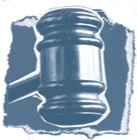A.B. was a 14-year-old middle school student at Greencastle Middle School, which had a policy against wearing body piercings at school. A.B. opposed the policy and later, while attending a different school, decided to express her feelings about it online.
In 2006, Shawn Gobert was the principal of Greencastle. Mr. Gobert learned that a derogatory Web page about the administration had been created on MySpace. A.B.’s friend had created a “Gobert” page and invited her to take a look. A.B. posted her own comments on the site, including “die . . . gobert . . . die.” Then A.B. created her own MySpace page under the name “Fuck Mr. Gobert and Greencastle Schools.” She posted a total of six messages on the two different sites, including the message shown at the beginning of this chapter.
Two weeks later, the state of Indiana filed a delinquency petition against A.B. in juvenile court, charging her with eight counts of harassment. The court dismissed two of the counts and found A.B. guilty of the remaining six. She was placed on probation for nine months. A.B. appealed the juvenile court’s decision that her postings were obscene and therefore not protected by the First Amendment as political speech. Her case went to the Indiana Court of Appeals.

How Would You Decide This Case?
Admittedly, A.B.’s tirade against the school was strong and contained offensive language. But do words alone forfeit your right to speak? Did A.B. harm or injure anyone? Was her criticism of the school’s piercing policy a crime, or was it a legitimate expression of her point of view? Does it make any difference that A.B. was not attending Greencastle at the time of the incident?
If the appeals court maintains the harassment conviction, what lesson do you see here for students wishing to speak up on school issues? If the conviction is overturned, what does that say to school officials attempting to create a safe learning environment for all students?

What the Court Decided
The Indiana Court of Appeals did not address the issue of obscenity, but ruled instead on the basis of protected political speech. A.B. was upset with the school’s dress code and vented her displeasure in writing. The court held that, “While we have little regard for A.B.’s use of vulgar epithets, we conclude that her overall message constitutes political speech.”
The court was mindful that political expression is not shielded from all criminal liability. If your expression causes harm to another, then it may be a crime. In this case, however, no evidence showed that A.B.’s postings inflicted personal harm or injury on anyone. Her conviction for harassment violated her right to speak and was therefore dismissed. The prosecutor took the case one step further and appealed to the Indiana Supreme Court.
The state supreme court agreed that A.B.’s conviction was wrong, but for a different reason. They decided the harassment charges filed against A.B. had not been proven. Under Indiana law, harassment includes the intent to harass, annoy, or alarm another person. This means that A.B., in posting her comments, must have intended Mr. Gobert to read them. However, what she wrote on her friend’s private profile page was not viewable by the general public, only by accepted friends. Therefore the court ruled that A.B. had no “expectation that her conduct would likely come to the attention of Mr. Gobert.”
A.B. won her case before two appellate courts, each for different reasons: protected speech and no intent to harass.
How Does This Decision Affect You?
The criminal laws of each state provide notice of what behavior is unacceptable. Any charge filed against a person must be proven beyond a reasonable doubt. In A.B.’s case, the state failed to prove that she intended to harass the principal. If the state had proven intent, then her speech may not have been protected. The facts of every case must be carefully reviewed before consequences are imposed.
This decision also supports the concept of privacy in personal postings on sites that are not accessible to the public. That’s not to say that someone couldn’t send your comments out to the world from a private page. But since Mr. Gobert didn’t have access to A.B.’s comments made on a private page, he didn’t know everything she said.
“It is clear that school authorities are state actors for purposes of freedom of expression and are subject to the commands of the First Amendment.”
—from A.B.’s decision at the Indiana Court of Appeals
“We also observe that it is even more plausible that A.B. merely intended to amuse and gain approval or notoriety from her friends, and/or to generally vent anger for her personal grievances.”
—from A.B.’s decision at the Indiana Supreme Court
The bottom line: Courts may disagree and come to different conclusions when reviewing a case. A.B. could have lost just as easily if her case had been heard before another court, as you’ll see from other cases in this book.
What Is A.B. Doing Now?
A.B. has chosen to remain anonymous, which is her right. All attempts to contact her have been unsuccessful.
Related Cases
State v. McEvoy and Gagnon (Colorado, 2007)
“My fists are my best friends—you’re about to meet them too.” This was one of several threatening lyrics in a rap song posted online by 18-year-old Jonathan McEvoy and 19-year-old Nicholas Gagnon. The song was written to retaliate against a group of students at Loveland High School in Colorado. The boys were suspended for a week and the song was removed from the Web. They were charged with criminal harassment, but since the words were not specifically directed toward anyone, the charges were eventually dropped.
Dan Sullivan v. Houston Independent School District (Texas, 1973)
This is an early case involving suppression of student speech. Although not involving the Internet, it laid the foundation for future decisions about student expression. Dan Sullivan wrote Pflashlyte, an underground newspaper critical of his high school and the administration. He sold the paper across the street from the school, but copies found their way onto campus. Dan was expelled for not following “prior submission” rules set by his school, which the court said were reasonable. Students could distribute their writings on campus before and after school, but only after being reviewed by the principal. Dan had repeatedly violated the policy and the expulsion was upheld.
Thomas v. Granville Central School District (New York, 1979)
In another early case involving student free speech, Donna Thomas and three friends, all seniors at Granville High School, wrote the newspaper Hard Times and sold it off campus. It contained some sexual content and was self-described as “uncensored, vulgar, and immoral.” However, it failed to disrupt any school activities. Once the paper came to the school’s attention, the seniors were suspended for five days. The students took the matter to court. Ruling in the students’ favor, the court stated, “The risk is simply too great that school officials will punish protected speech and thereby inhibit future expression.”
Things to Think About
We all have moments of anger or frustration. It’s human nature to react when life presents us with a challenge or obstacle. But it’s how you react that may change your life. What could A.B have done differently to express herself and avoid the problems she created? Even though she won her case in court, the outcome in her case or in any of these cases could have gone the other way, especially if the victim suffered physical or mental injury. Try putting yourself in the shoes of the victims in these cases. What, if any, difference does it make in how you view them?
Chapter 4: Further Reading and Resources
Netsmartz Workshop • www.netsmartz.org/netteens.htm NetSmartz Workshop is a program of the National Center for Missing & Exploited Children, which offers free Internet safety resources. Find out how to stay in control of your online profile, and watch videos of real-life stories told by teens who have been victims of Internet exploitation.
Decker, Charlotte. “Cyber Crime 2.0: An Argument to Update the United States Criminal Code to Reflect the Changing Nature of Cyber Crime.” Southern California Law Review 81, no. 5 (July 2008): 959–1016.
Simpson, Scott R. “Report Card: Grading the Country’s Response to Columbine.” Buffalo Law Review 53, no. 1 (Winter 2005): 415–458.
Williams, Kara D. “Public Schools vs. MySpace and Facebook: The Newest Challenge to Student Speech Rights.” University of Cincinnati Law Review 76, no. 2 (Winter 2008): 707–732.

